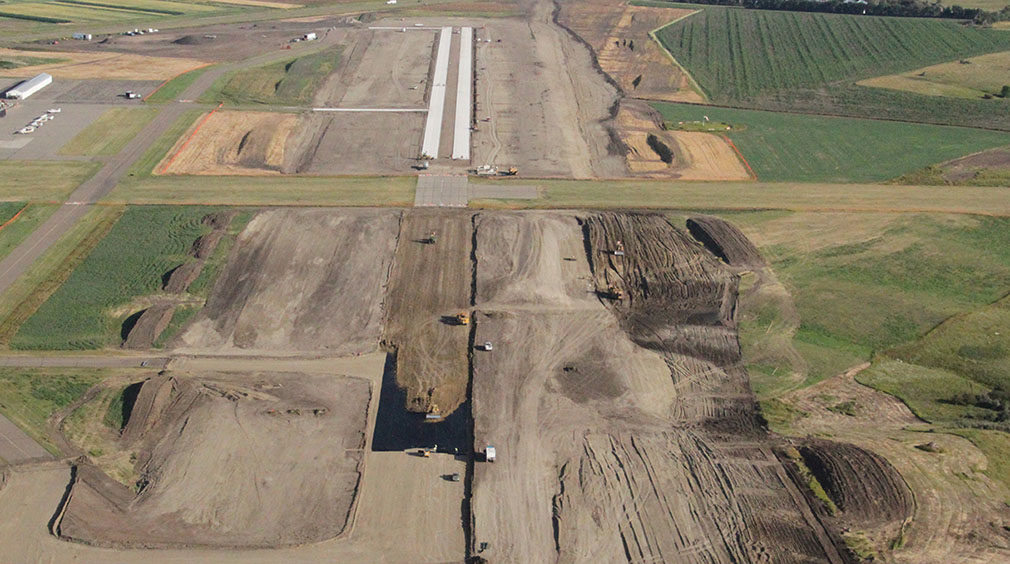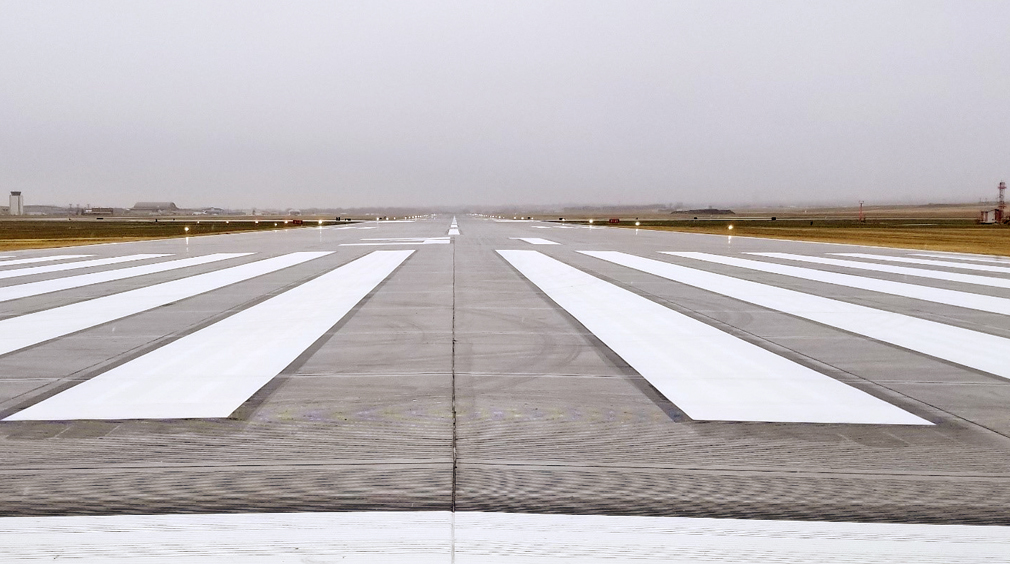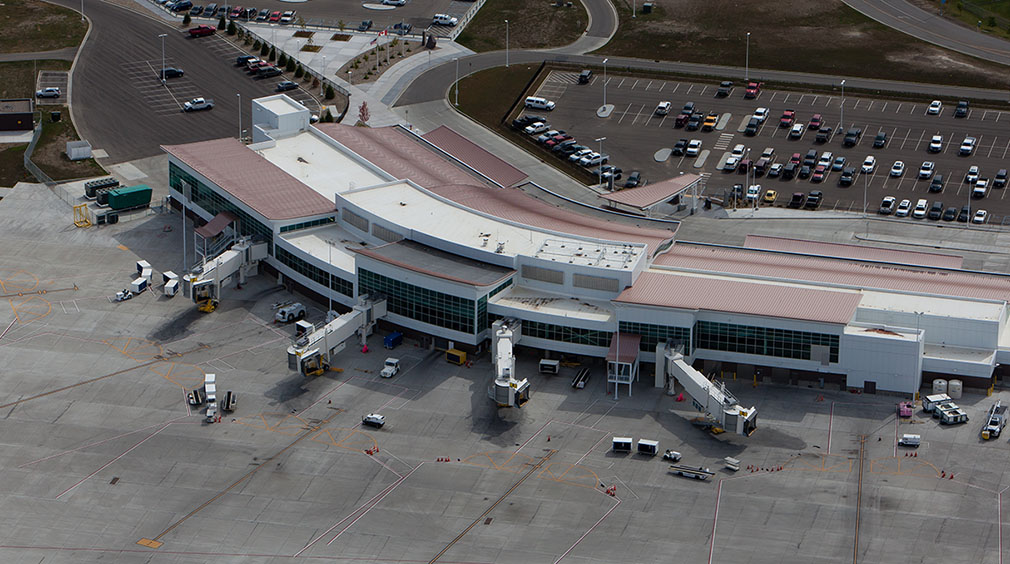PROBLEM
Williston, ND, located in the heart of the Bakken Formation, has grown in population significantly as the result of the oil boom. Rapid increase has caused the need for housing, infrastructure, and other community amenities – including air travel – to surge. Sloulin Field International Airport’s extreme upsurge in enplanements caused numerous concerns for the City of Williston. The airport’s one-room departure hall and parking layout could no longer accommodate passengers and the runway was not in compliance with Federal Aviation Administration (FAA) requirements.
SOLUTION
To address Williston’s inefficient air activity, the City hired KLJ in 2011 to execute a site selection and airport feasibility study. It was determined that a new location would most effectively accommodate Williston’s needs. We also conducted an Environmental Assessment (EA) beginning in 2012, for which we were awarded an American Council of Engineering Companies of North Dakota (ACEC/ND) Engineering Excellence award in 2014. The EA was submitted to the FAA in August 2015 and garnered approval in September 2015; the process of transforming an initial conceptualization to a full-planned and environmentally-cleared airport was expedited and completed in only four years. During the environmental process, our team evaluated several alternative locations based on various factors which included environmental impacts, cost of construction, hazardous wildlife attractants, aeronautical obstructions, airport utility, and FAA regulations. In addition, we compared compatible land use and socioeconomic impacts for each alternative location. We also obtained vital stakeholder and agency input by hosting several public information meetings throughout the process.
Since 2011, we have facilitated land acquisition; created a master plan; designed and constructed the runway, parallel taxiway, navigational aids, terminal building, parking lot, aircraft rescue and firefighting/storage and rescue building, and fuel system; relocated major utility pipelines and coordinated the route for natural gas service; designed the sanitary sewage collection system; and designed a high-availability redundant system for electrical power distribution. By January 2017, the FAA granted $54 million to help fund the airfield projects.
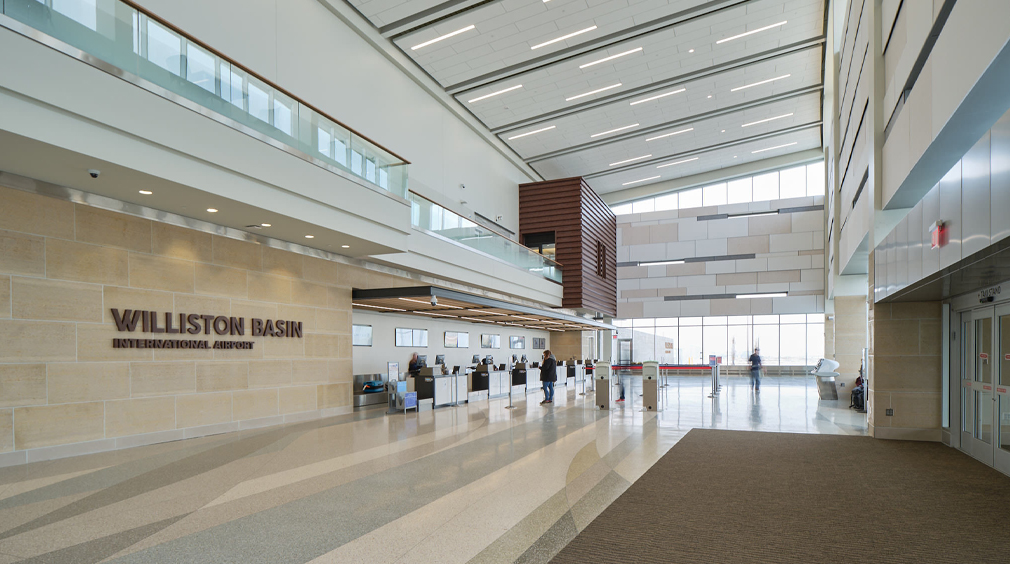
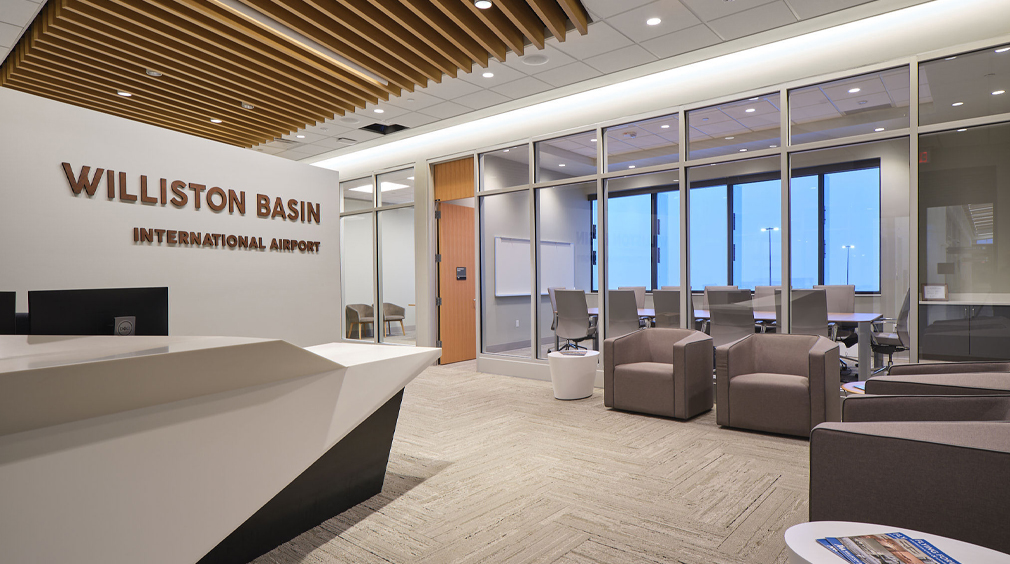
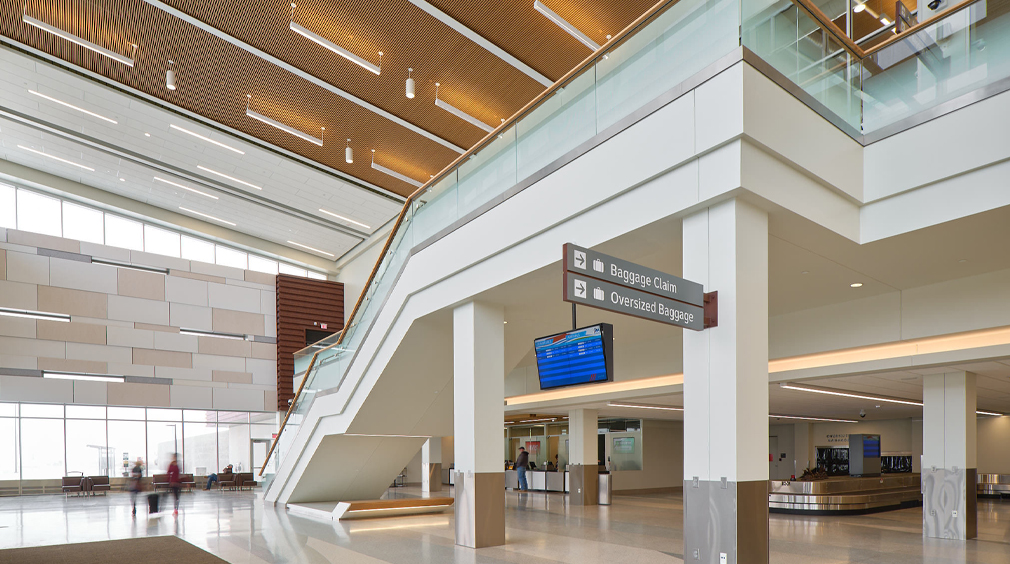
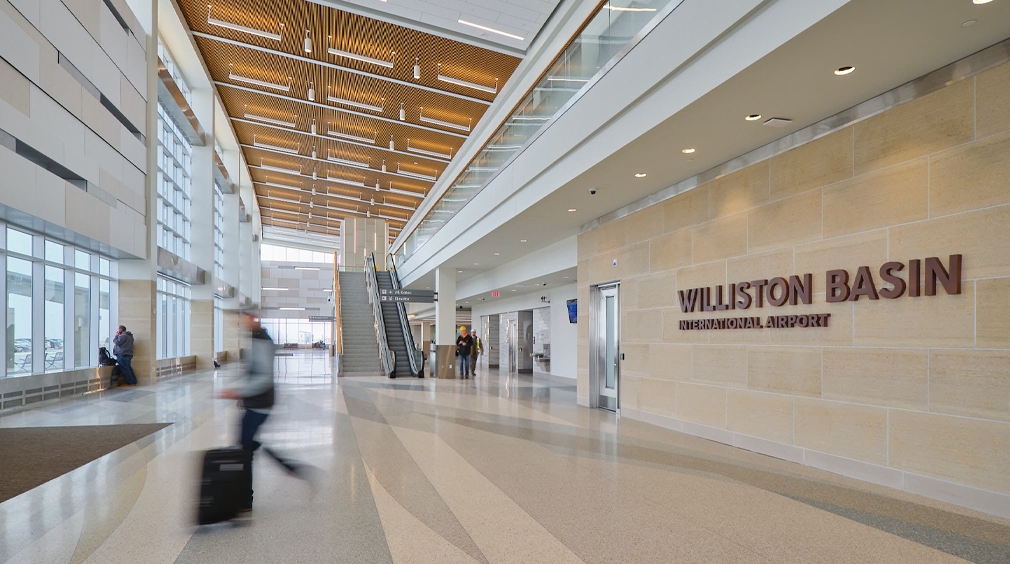
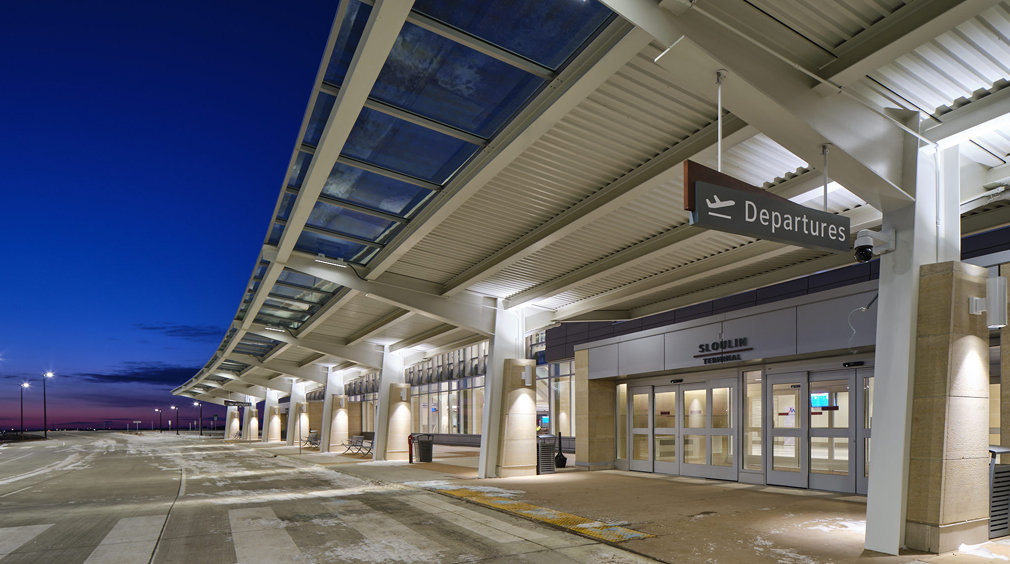
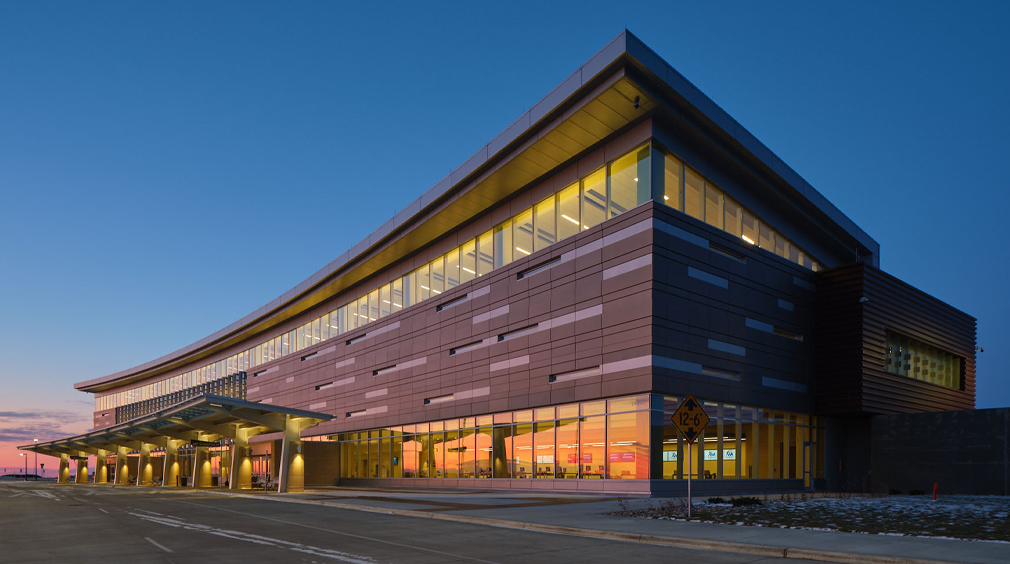
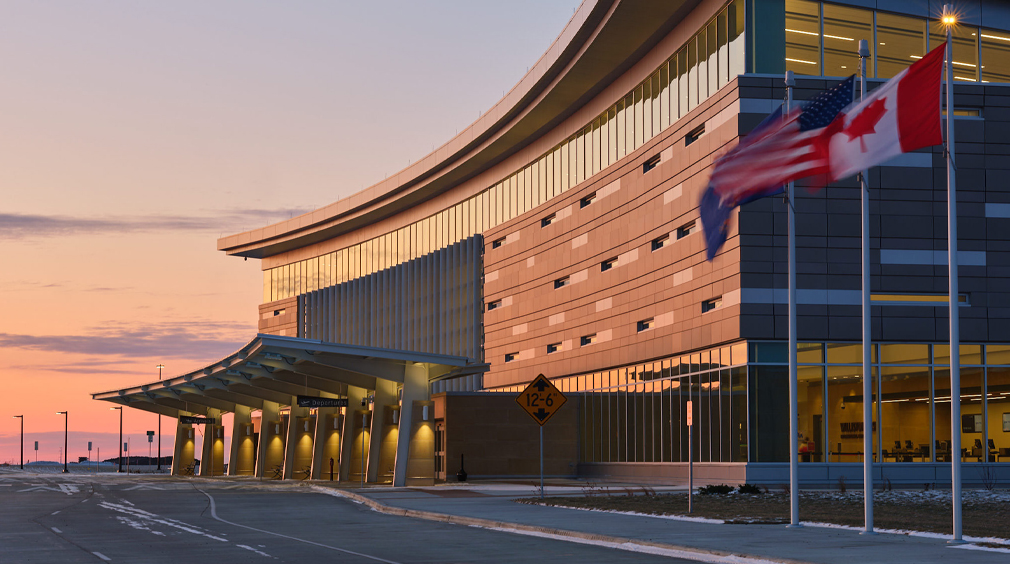
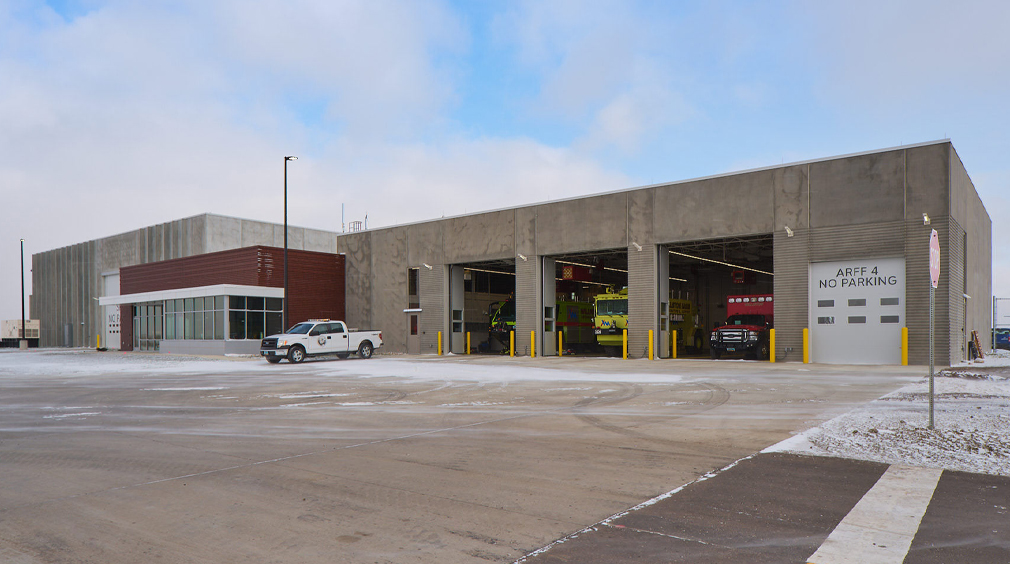
RESULTS
After roughly 8 years of project work, the highly-anticipated facility officially opened when the first flight landed at the completed Williston Basin International Airport on Oct. 10, 2019. The new airport helps the City of Williston compete for air service and encourages an equal playing field for attracting and retaining air service. While the airport was designed to accommodate the existing activity in Williston, it has also been laid out to allow for a significant amount of expansion in the future should activity levels increase. The airport is expected to enhance the economic impact on the region and will provide potential for new business development.

